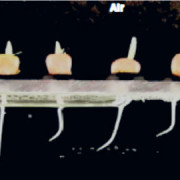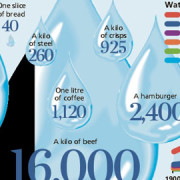Phytoremediation
Phytoremediation is the ability of some plants and/or associated microorganisms to remove and/or render harmless environmental pollutants, such as heavy metals or organic contaminants that can be present in soil. Different techniques of phytoremediation exist. Among them are phytostabilization, which consists in the complete immobilization of the metals (or at least in a reduction of their availability) in soil or roots; phytoextraction, which identifies the uptake of contaminants from soil and their translocation from roots to the aboveground portion of the plant and phytodegradation by which organic pollutants are transformed by internal or secreted enzymes into less toxic compounds that can be sequestered into plant tissues or volatilized (phytovolatilization). Rhyzodegradation is another important process almost completely carried out by the enzyme activity of the rhizosphere microbial population. A multitude of advantages give attractiveness to the use of phytoremediation for soil decontamination if compared to the adverse effects of standard physiochemical techniques on soil structure and fertility; not to mention the significant engineering costs. The main advantages of phytoremediation are: self-maintaining (autotrophic) characteristics of plants, minor costs, greater public approval, possibility of carbon sequestration, soil stabilization and biomass production.
LINV projects:
• The project VESPA – Vegetal System for Pollution Avoidance, is funded by The Ministry of Defence. The general objectives of the project are focused on the ability to reduce soil pollution using plants. The project involves the review of current literature on phytoremediation focusing on the use of fast-growing plants with high biomass production and developed root apparatus, the selection of plant species of trees and shrubs that are able to absorb large quantities of organic and inorganic pollutants, the development of protocols and technical applications in the laboratory and, in a second phase, the implementation of a pilot project in a contaminated area.
In addition in the lab we are currently conducted experiments to understand heavy metal tolerance strategies in Psidium guajava, Tetradenia riparia, Populous spp., Silene paradoxa, Silene vulgaris.









